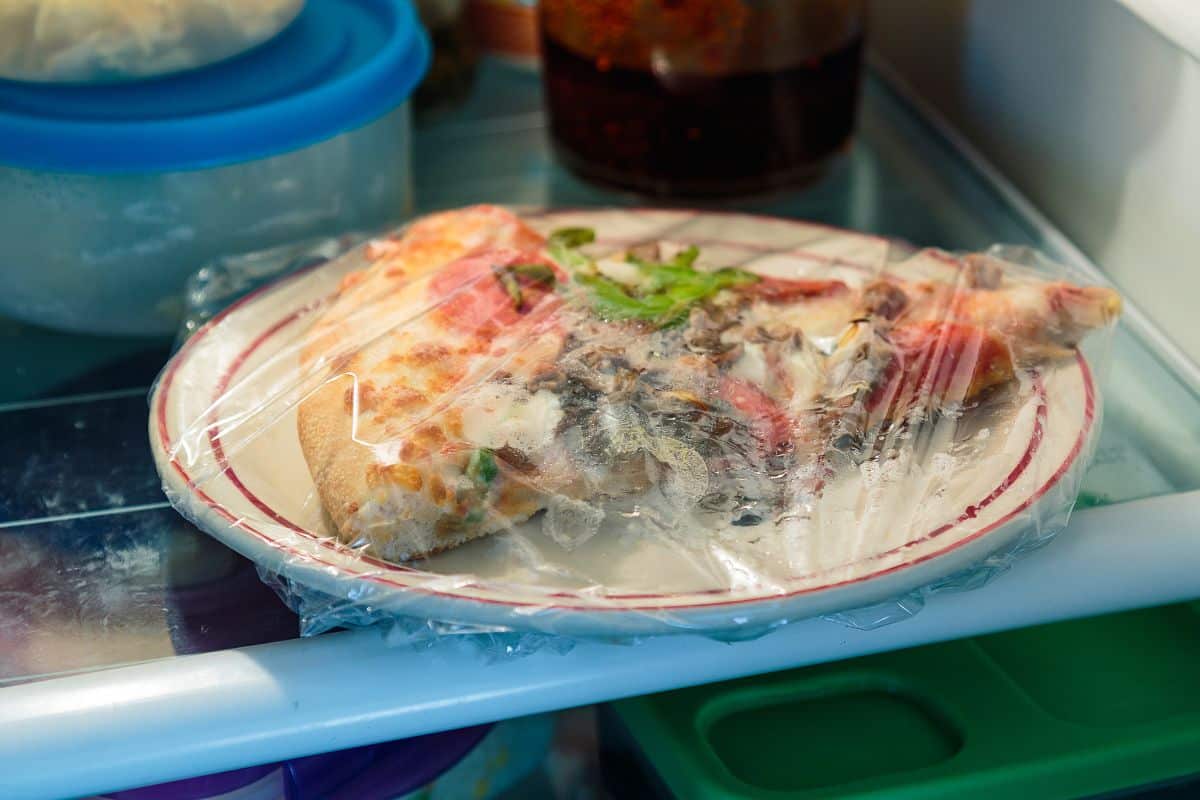Pizza lovers everywhere face the same dilemma after ordering that extra-large pie – how long will those leftover slices stay good in the refrigerator? Whether you’re a college student surviving on day-old pizza or someone who deliberately orders extra for later consumption, knowing proper storage times helps prevent foodborne illness while maximizing enjoyment of this beloved food.
Safe storage timeframes for refrigerated pizza
Generally speaking, leftover pizza remains safe to eat for 3-4 days when properly refrigerated at 40°F (4°C) or below. This timeframe applies to most varieties including cheese, pepperoni, vegetable, and meat-topped pizzas from restaurants or homemade versions. The USDA Food Safety and Inspection Service confirms this guideline as appropriate for most cooked leftovers, including pizza.
However, several factors influence how long your pizza stays fresh:
- Topping types (meat pizzas may spoil faster than vegetable options)
- Initial quality and freshness when refrigerated
- Storage method (covered vs. uncovered)
- Temperature consistency in your refrigerator
- Whether the pizza was left out at room temperature for extended periods
For optimal safety, refrigerate pizza within two hours of receiving delivery or removing it from the oven. If the ambient temperature exceeds 90°F (32°C), that window shrinks to just one hour. Leaving pizza out overnight makes it unsafe for consumption regardless of how tempting those morning slices appear.
Similar to how certain foods require special storage to maintain freshness, like protecting bananas from fruit flies, pizza needs proper refrigeration to remain safe and tasty.
Best methods for storing pizza in the refrigerator
How you store your pizza significantly impacts both its safety and quality during refrigeration. The goal is to protect it from air exposure while maintaining appropriate moisture levels. Consider these effective storage options:
Airtight containers offer superior protection for leftover pizza. These containers prevent air circulation that accelerates spoilage while protecting your slices from absorbing refrigerator odors. Stack slices in a single layer or place parchment paper between layers if stacking is necessary.
If containers aren’t available, aluminum foil provides an excellent alternative. Wrap individual slices or stack them with foil between layers, then wrap the entire package securely. This method creates a reasonable barrier against air while being more space-efficient than rigid containers.
Plastic wrap can work in a pinch but may stick to cheese and toppings, potentially ruining the pizza experience when unwrapped. If using plastic wrap, consider placing a layer of parchment paper directly on the pizza first.
Never store pizza in its original delivery box long-term. Cardboard boxes allow too much air circulation and can absorb refrigerator moisture. They’re designed for short-term transport, not multi-day storage.
Similar to how proper cleaning techniques, such as those used to remove stains from household surfaces, require specific methods, pizza storage demands appropriate techniques for best results.
Signs your refrigerated pizza has gone bad
Even when stored properly, pizza eventually spoils. Knowing when to discard leftover pizza helps prevent foodborne illness. Look for these telltale signs that your refrigerated pizza has passed its prime:
Visual indicators of spoilage provide the most obvious warning signs. Mold appears as fuzzy spots in various colors including white, green, blue or black. Any visible mold growth means the entire slice should be discarded immediately, not just the affected area.
Your nose offers another reliable detection method. Fresh pizza has a pleasant, appetizing aroma, while spoiled pizza develops a sour, unpleasant smell. If your pizza has an off odor when cold or after reheating, discard it regardless of appearance.
Texture changes signal deterioration as well. Pizza past its prime often develops a slimy feel on the toppings or unusual dryness in the crust. These texture issues indicate bacterial growth or excessive moisture loss.
When in doubt about your pizza’s safety, remember the food safety mantra: “When in doubt, throw it out.” The risk of foodborne illness outweighs the value of consuming questionable leftovers.
Reheating refrigerated pizza properly
Reheating refrigerated pizza properly not only enhances flavor but also ensures any potential bacteria are eliminated. The best reheating methods restore the original texture while ensuring food safety.
- Oven reheating (325-350°F for 5-10 minutes) restores crispy crust
- Skillet method (medium heat with lid) provides crispy bottom, melty top
- Air fryer (350°F for 3-4 minutes) offers quick, crispy results
- Microwave (30-second intervals with water cup) works for convenience despite texture compromise
For energy-conscious individuals, consider how different cooking methods impact electricity usage. Some modern reheating technologies can save energy while cooking various foods, including pizza.
Always ensure your reheated pizza reaches an internal temperature of 165°F (74°C) to eliminate potential bacteria. Food thermometers provide the most accurate measurement if you’re concerned about proper heating.
When reheating, consider adding fresh ingredients like herbs, red pepper flakes or a light drizzle of olive oil to refresh flavors that may have diminished during storage. This simple step transforms day-old pizza into a more satisfying meal.
Extending pizza freshness beyond standard timeframes
If you can’t consume your leftover pizza within the standard 3-4 day window, freezing offers an excellent preservation method. Frozen pizza maintains safety and reasonable quality for up to 2 months when properly stored in freezer-safe containers or heavy-duty freezer bags.
For best results when freezing, wrap individual slices in plastic wrap or aluminum foil before placing them in a larger freezer container. This double-wrapping prevents freezer burn while allowing you to thaw only what you need.
When ready to eat frozen pizza, thaw it overnight in the refrigerator rather than at room temperature. This slow thawing process maintains food safety. Once thawed, consume or reheat the pizza within 3-4 days, treating it as fresh refrigerated pizza.
Remember that while freezing extends safety, texture quality gradually diminishes. The sooner you consume frozen pizza, the more closely it will resemble its original texture and flavor profile.

